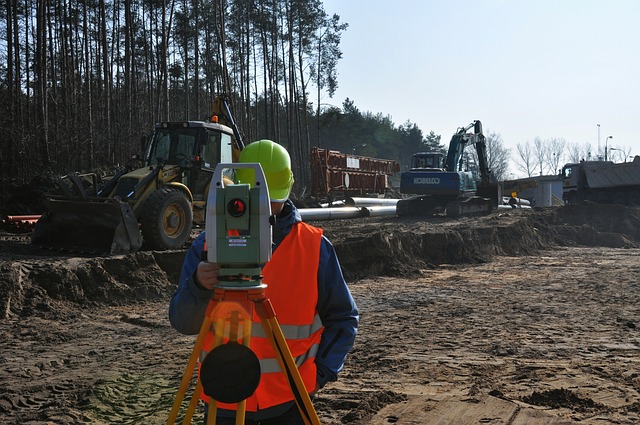Levelling in surveying
Levelling is a process of determining the height of one level relative to another. It is used in surveying to establish the elevation of a point relative to a datum, or to establish a point at a given elevation relative to a datum.
The main instruments used for levelling include:Types of level
- Dumpy level: Often a generic term for an optical level.
- Tilting level: Replaced by the automatic level but useful where vibration is a problem.
- Automatic level: Includes an internal pendulum which allows a horizontal reading.
- Laser level.
- Digital level: Staff read automatically.
- Water level: Useful in confined spaces.
The Reticule diaphragm
The reticule, sometimes known as the cross-hairs or stadia hairs. The full horizontal line is the reference line for levelling and the 2 shorter lines above and below the full line are stadia lines for tacheometric measurements.
Reading staffs
Care should be taken of staffs as well as levels as they are prone to damage. They should be inspected regularly for signs of wear. A common error is misreading the staff, so it is important that time is taken to ensure accurate readings.
Holding the staff
The staff must be held vertical. The best ways to eliminate error are as follows:
- A small spirit level should be attached.
- Whilst standing upright the staff should be held in front with both hands down the side of the staff.
- The staff should be ‘rocked’ back and forth, and the lowest reading recorded.
- The verticality of the staff should be checked against a vertical line by standing to the side of the staff and checking it is aligned.
Booking observations
The steps to take when booking observations are as follows:
- A new job should be started on a new page of the levelling book.
- The details should be entered at the top of the page.
- All observations should be booked legibly. If a mistake is made it should be crossed out and the correct value written above it instead of overwriting figures.
- One line should be used for each position of the staff.
- There should always be an entry made in the remarks column.
- Work should be spread out appropriately.
There are two accepted methods of booking observations – Rise and Fall method and Height of the Plane of Collimation method (HPC/HOC). Neither method can be said to be more accurate than the other. Rise and Fall does have an additional check on the arithmetical reduction of the observations which makes it more popular on line levelling. The HPC method is used for setting out because one always needs to know the height of the instrument.




No comments:
Post a Comment